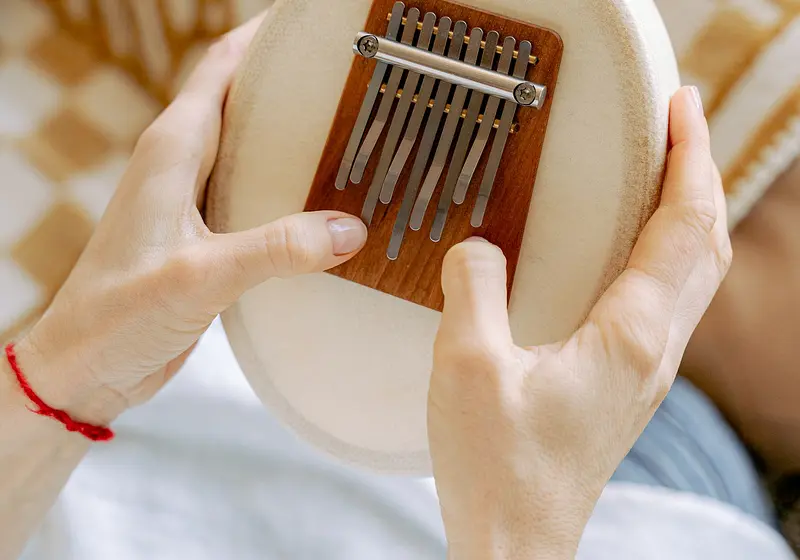There are thousands of languages in the world, yet humans can only universally understand a few. One of them being art, and one of them being music. Music is the language of the universe.
We hear and even see music everywhere, whether it be the birdsongs echoing in the heavy sky, the rhythmic crackles of a lively Fourth of July festival, or even the harmonic thumping of a military parade. Even for hearing-impaired people, you can still feel rhythm and vibrations! Music is truly a wonderful thing, and each culture has its own take on music. The world has so much to offer with different instruments at each corner! The following are 10 unique and interesting instruments from around the world!
1. Crwth (Wales)
The crwth is a type of lyre typically associated with Welsh music. It has a vaulted back and is around the size of a violin. Similar to the violin in form, it can also be played by bowing the strings or plucking them, like pizzicato. There are six strings, and each has its own Welsh name!
2. Djembe (Mali)
The djembe is a goblet drum originally from West Africa. The skin used to be rawhide, from goat or cow skins, but modern djembes use synthetic skins. Tribes in West Africa used the djembe as a form of long-distance communication.
The djembe also consists of three spirits: the spirit of the tree, the spirit of the animal, and the spirit of the drum maker. Also, a fun fact: The djembe was played for the king of Mali to announce his arrival!
3. To'ere (Tahiti)
In a typical Tahitian drumming rhythm, the to'ere is the most challenging to play. It's made from a hollowed-out log of milo wood, and can be played in five styles: Mua, Ropu, Muri, Tahape, or Oro Oro. Additionally, a piece of wood is used to create sound on the to'ere by striking it. The to'ere typically has carved-out designs to make it look fancier!
4. Charango (Bolivia)
The charango is part of the lute family and is similar in size to a ukulele. It is also made from quirquincho armadillo shell, since wood is a rare commodity in the Andes mountains, where it was originally created. The Quechua designed the charango with ten strings and is now one of the most popular instruments in the Andean region!
5. Kulintang (Philippines)
The kulintang is a percussion instrument native to the Philippines, on the Mindanao and Sulu Islands. It's a type of indigenous drum and gong ensemble and is played by striking the bosses of the gongs with two wooden beaters. Originally, the indigenous people of the Phillippines used kulintang music in healing rituals and ceremonies.
6. Balalaika (Russia)
The balalaika is a Russian instrument with three strings, played by plucking or strumming, like the crwth. Balalaika means “little bundle” in Russian, yet the true meaning behind the balalaika is different. This striking instrument openly celebrates the common man, focusing on simplicity and the idolization of the peasant class. The balalaika contains an ornately carved sound hole in the center, combined with highly decorative wood inlays, and hand paintings.
7. Sitar (India)
The remarkable sitar is as old as time itself, dating back hundreds of years in its humble origins around the Indus Valley. The first sitar had only three strings, but it now has around 18 to 21. The sitar bridge is made of deer horn and camel bones, and the mains strings are tuned by sliding a bead threaded on each string below the bridge. As difficult it is to play, it is just as difficult to make, taking around twelve hours to masterfully handmake a sitar from scratch.
8. Buleador (Puerto Rico)
Our trip around the world lands us in Puerto Rico, with the buleador. The buleador is a low-pitched drum developed in Puerto Rico and the surrounding Caribbean islands. It is a key instrument in the Bomba musical genre.
Bomba music is a type of Puerto Rican genre that was developed by West African slaves, and it now remains as a relic for future generations as a reminder of a dark and horrible past. Despite the grim history behind the buleador, it serves as an important instrument when it comes to keeping the rhythm throughout each song, like a metronome. The buleador was originally crafted by stretching out animal skins overused rum barrels.
9. Kemancha (Iran)
The kemancha is a historical ancestor of the bowed Byzantine lyre, and has now diffused throughout the Middle East, especially in Azerbaijan, Armenia, Turkey, and Iran. The kemancha has a spherical body, four strings, a fretless arm, and is usually around 70 centimeters tall. The body of the kemancha is hand-carved from mulberry or juniper trees and typically has two large D-shaped holes on its chest.
Note: The spelling of “kemancha” is widely disputed, however, this article uses the spelling Merriam-Webster provides.
10. Ajaeng (Korea)
The ajaeng is a Korean string instrument made from paulownia and forsythia wood. The role of the ajaeng is to play the bass part in ensemble music. It is a wide zither with seven strings made from silk, and its strings are supported by separate bridges.
The player sits on the floor behind the ajaeng and moves the bow, while using vibrato to create a full and rich sound. The melodies of the ajaeng are known to be very expressive.
Conclusion
That concludes our world tour. We ventured into the vast taiga of Russia to see the balalaika, and we traversed Timbuktu to come across the strong djembe. Then, we ended the tour in Korea with the highly expressive ajaeng.
This tour took us to each corner of the world, yet there's so much that we didn't explore! Each country has its vast musical heritage, and this is just the tip of the iceberg! It's up to you to continue this trek, and you can continue anywhere you want! Whether it be the fjords of Norway or the rainforests of Brazil, I promise you that wherever this journey takes you, the destination will surprise you! Music is the language of the world, and the language of the universe, and we should all cherish it!
“Where words fail, music speaks.” - Hans Christian Andersen




